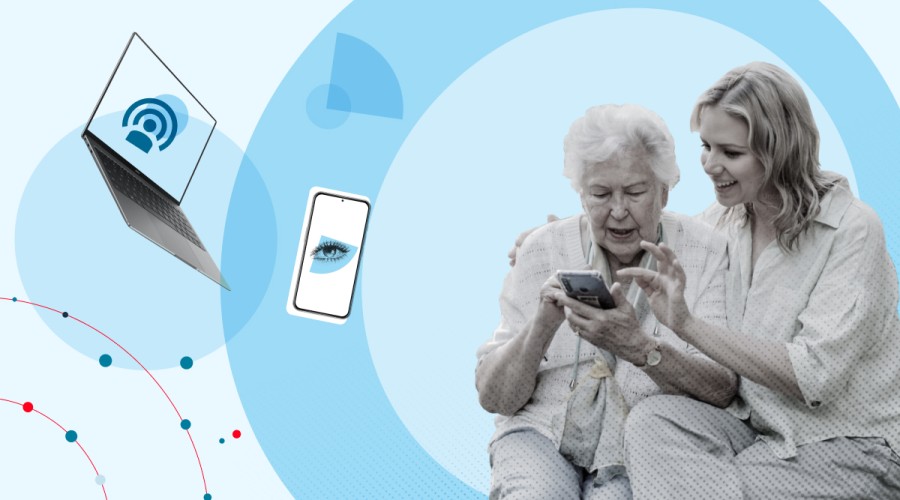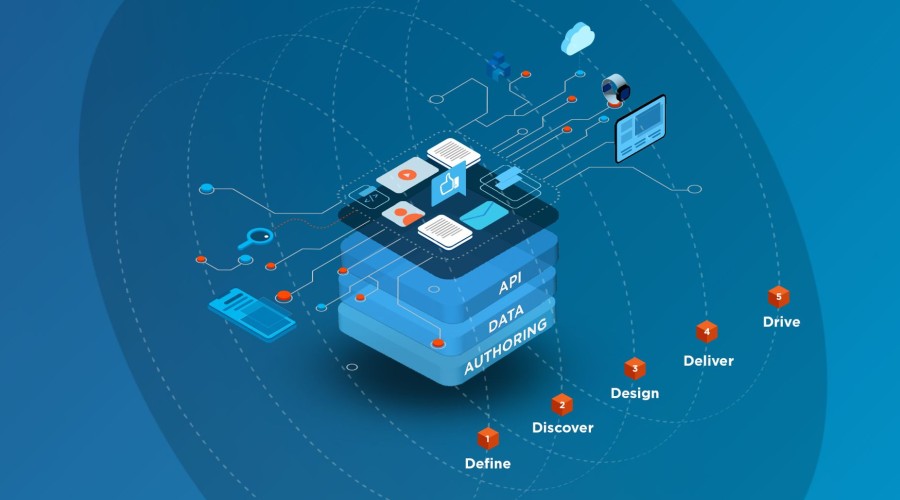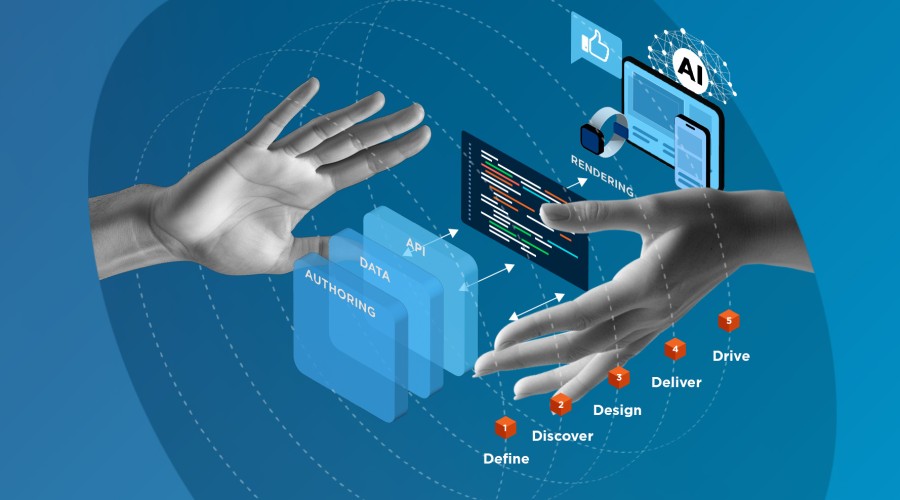If you work with designers and creatives, you’re probably missing face-to-face workshops right now. Maybe your normal world of Post-Its and whiteboards is feeling distant, or you’re hankering after a pack of multicoloured Sharpies.
That’s normal – the ways we can manage our design process, design sprints and creative workshops are quite different now.
At Cyber-Duck, we’ve been remote-first for several years. Over that time, while sometimes you would ideally meet in person, we’ve learnt there are many ways to work creatively, collaboratively and effectively with our clients and colleagues – even at a distance.
Here, we’ll show how you can run remote design workshops and sprints. We’ve also included some tips for collaborating remotely, based on our experience.

What can you use when your normal tools aren't available?
By the way, much of this advice applies to all kinds of remote working – if you’re running creative brainstorms or content workshops you’ll also find useful tips here. As a leading agile digital agency focused on UX & Service Design, we bundle workshops into a discovery phase or even design sprints. Workshops help to uncover various problems and stimulate creativity within the design sprint.
What is a design sprint?
Originally coined by the famed Google Ventures (GV) team, ‘design sprints’ are:
“A five-day process for answering critical business questions through design, prototyping, and testing ideas with customers.”
At their heart, design sprints are about getting a team into one space and compressing the process of ideation, prototyping and testing into a single week.

Design sprints give you agility and focus – and you can run them remotely.
Design sprints give you agility and focus. They’re used by companies like Nest, Slack and Medium to develop designs swiftly, then test them on real users.
How to run a remote design workshop
Within your sprints, you will probably require several workshops. The key to running effective remote workshops, much like an in-person workshop, is preparation. Nothing new there. But the preparation is different. As well as ensuring everyone’s clear on the workshop’s goals, and on top of getting your activities and exercises ready, you’ll need to:
1. Configure and test your tech setup in advance
Technical niggles are a common part of our daily lives right now. (“Can you hear me? Are you on mute?!”) When people are stressed and frustrated by technical glitches, it’s hard to get into a creative mindset – and it wastes precious ideation time.
That’s why we really recommend a technical dry run beforehand. Test your software with a few dummy participants to ensure it works as expected. Particularly if you’re using the breakout rooms feature in Zoom, or collaborating on multiple boards on Miro, it’s best to test ahead, so that during the real workshop it works seamlessly for participants.

Test your tech ahead of time, so your remote sessions run smoothly.
There’s a useful rundown of remote working tools, tried and tested by the Cyber-Ducks, in our white paper on remote-first design sprints – download it for free now here.
2. Send joining instructions ahead of time
Brief your participants well in advance. If you can, test the technical setup with them ahead too, so you know they’re able to get onto the various tools (e.g. Zoom or Miro). This cuts wasted time and reduces their stress levels, so they’re more able to be creative.
3. Have backup plans
Sometimes, no matter how carefully you prepare for a design sprint workshop or a creative brainstorm, things just don’t go to plan. Make sure you have a backup plan – even a lo-fi plan B will help if someone’s not able to use your chosen tools. That way, your session will still be productive.
4. Keep an eye on time
Sometimes activities run over, and sometimes it’s important that they do. As with any workshop, keep an eye on the clock, prioritise your exercises in advance and be prepared to adapt and change or reduce the number of activities if time gets too tight.
5. Assign roles in advance
Before any workshop, we ensure our team members are clear on their roles and the agenda in advance. We’ll assign a Facilitator, the person leading the activities and moderating the participants. They also ensure the right energy is maintained throughout. We’ll also assign an Observer, a person who will keep track of timings, and is responsible for recording and capturing the outputs of the workshop. We’ll introduce them at the start of the session, so everyone’s clear on their role.

The facilitator ensures everyone’s voice gets heard in a design workshop.
From the client side, we usually recommend a good, broad mix of stakeholders and experts from across different business functions associated with the design problem you’re tackling. This also helps with gaining wider buy-in from your organisation, as all departments have an opportunity to participate in the design process. These key stakeholders often include:
- Product Owner
Makes the final call, and can settle any protracted debates (this needs to be made clear upfront) - Marketing/Comms
Critical for ensuring the brand, messaging, and content is considered throughout - Operations
Understands the business processes that will intertwine with any user journey - Technology
Understands the technical landscape and any limitations that need to be considered - Research/Sales/Front-line
Team members closest to users with a good knowledge of their needs and pain points
Tips for collaborative remote working
We’ve found it really helpful to create and agree principles for collaboration early on in projects. It helps our clients’ teams and our teams work together. These principles define what to expect from each other, how you’ll run the project, and how you’ll collaborate in an open way.
Our golden principles for a successful remote design sprint or workshop are:
Do...
Sort the technology first
Ensure everyone’s clear on which digital facilitation tools are being used and how they’ll support your creative process. (Get a list of the tools we like in our free white paper.)
Keep energy up
in remote meetings it’s a lot easier for energy to drop: remote sessions are more mentally draining than physical ones. We mix things up with engaging exercises and different presenters (from your business and ours) and work in maximum three-hour blocks.
Timebox your exercises
If your exercises drag on (and they easily can!) it takes longer to collate and sort through everyone’s solutions. Be flexible, adaptive and reactive to the situation. (Making the time left for any activities visible also helps keep energy levels up.)
Simulate face-to-face
If you’re using Zoom like us, keep the video cameras switched on – it really helps give a sense of a face-to-face meeting. We ensure client teams check their Internet connection (via speedtest.net) and use headphones for better clarity of speech.
Don’t...
Expect it to be the same
Naturally, remote design sprints have different challenges from your usual process. That’s okay. It’s to be expected.
Talk over each other
It’s really important to get everyone’s perspective – and over video calls, it’s much harder to track the conversation if people speak over each other. Take turns or consider visual cues to determine whose turn it is to speak. The Facilitator should know they can make the call if the debate gets too lively.
Have any distractions
If you were meeting in person, you’d encourage participants to log out of their emails and put their phones to one side. That’s even more important if you’re meeting virtually. But do give flexibility and support to those who have access or childcare needs.
The new normal
Remote meetings, design workshops and sprints aren’t like meeting in person. But we’ve found that they’re simply a different way of working. There needn’t be a change in quality – if you prepare and manage the process, remote workshops can be just as effective as in-person ones.
There’s more tips and practical advice in our white paper on remote-first design sprints. Find out more about:
- Remote design sprints
- Kickoff workshops
- Developing personas and service design blueprints remotely
- Ideation at a distance
- Remote user testing
It’s free to download – get your copy now.
Oh, and one final tip – bring your own Post-Its and Sharpies. You never know when they might come in handy.




